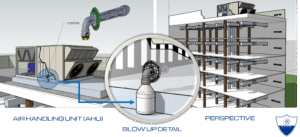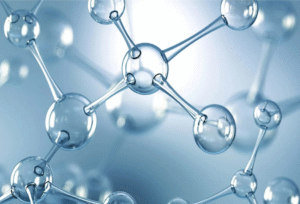
Chemical Air Sanitizers outperformed UV light and HEPA filtration in the EPA’s controlled chamber tests, achieving a 3-log reduction (99.9%) of infectious particles within 90 minutes
Mechanism of Action
- Chemical Air Sanitizers (e.g., Thyme oil vapour) act directly in the air column throughout the chamber. They contact viral and bacterial particles before those particles can deposit onto surfaces or be pulled into filters. This allows them to inactivate pathogens continuously and volumetrically across the entire airspace.
- HEPA filters rely on airflow to capture particles. Unless every particle is drawn through the filter, pathogens remain suspended. In large or static air volumes (like the EPA test chamber), many infectious aerosols will not encounter the filter within 90 minutes.
- UV germicidal lamps (UVGI) only work when particles pass directly through the UV irradiation zone at sufficient dose and exposure time. In a chamber test, airflow and particle distribution limit the chance of all particles being exposed to enough UV dose in 90 minutes.

- Uniform Coverage vs. Point-of-Contact
- Chemical vapors distribute uniformly in the airspace, treating every cubic centimeter simultaneously.
- HEPA and UV are point-of-contact technologies—they only act where particles pass through the filter media or the light beam. This explains why efficacy is limited in short test windows.

- EPA 90-Minute Test Constraint
- The EPA chamber tests efficacy by requiring technologies to achieve a 3-log reduction within 90 minutes.
- HEPA filters can achieve excellent results over much longer time frames or with high recirculation rates, but in 90 minutes, particle turnover is incomplete.
- UVGI also shows good long-term control in real-world ventilation systems, but its dose-delivery curve is slow in a sealed chamber.
- Chemical sanitizers are the only intervention that rapidly neutralizes pathogens throughout the entire chamber without relying on airflow or particle migration.

- Particle Tracing Data (Biermann chamber validation)
- Tracer particle studies confirm that in a 90-minute sealed chamber:
- Only a fraction of particles migrate through HEPA filters.
- Many particles remain suspended, never passing through the UV or filter “treatment zones.”
- By contrast, vapors contact all suspended particles uniformly, explaining why chemical sanitizers consistently hit the 3-log reduction threshold
Conclusion:
Chemical air sanitizers were the only technology to meet EPA’s 3-log / 90-minute benchmark because they are volumetric, airborne interventions that treat the entire space continuously. HEPA filters and UV lights depend on particle transport into treatment zones, which is too slow in a 90-minute sealed chamber test.
